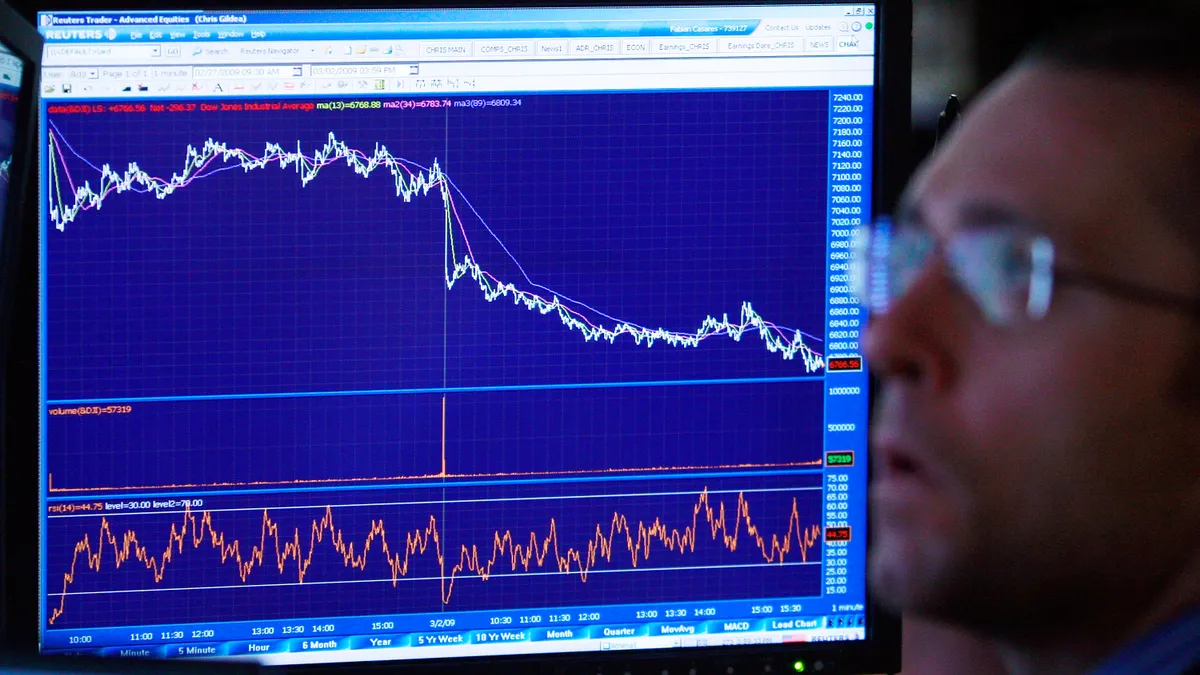Dive Brief:
- The U.S. economy will start to shrink during the second quarter of 2023 as it falters from the harshest policy tightening by the Federal Reserve since the 1980s, Fitch Ratings predicted.
- The downturn will prove “relatively mild by historical standards,” resembling the eight-month slump beginning in July 1990 that “followed similarly rapid Fed tightening in 1989-1990,” according to Olu Sonola, head of U.S. regional economics at Fitch.
- “Nevertheless, downside risks stem from nonfinancial debt-to-GDP ratios, which are much higher now than in the 1990s,” Sonola said in a statement.
Dive Insight:
Forecasts of a recession are increasing as economists and financial market analysts assess an economic contraction during the first six months of 2022 and a pledge by Fed policymakers to further increase borrowing costs this year.
The central bank — combating the worst price pressures in nearly four decades — has raised the federal funds rate since March to 3.25% from 0.25%.
Fed officials last month marked down their own economic projections, forecasting that the economy will grow 0.2% this year and 1.2% in 2023. In June, they predicted 1.7% growth for both 2022 and next year.
Fannie Mae forecast last week that the economy will shrink 0.7% this quarter and that sluggish consumer spending, Fed tightening and weakness in global growth will cause a “moderate contraction” in 2023 that pushes unemployment above 5% from 3.5% last month.
While trying to curb inflation, the Fed will probably “tolerate a modest recession,” Fannie Mae predicted, forecasting that GDP will decline 0.1% this year and 0.5% in 2023.
The Conference Board, also citing the sharp withdrawal of stimulus, forecast last month that the economy will probably tip into a brief, shallow recession from this quarter through the first quarter of next year.
Fitch “expects a very strong consumer balance sheet and the strongest labor market in decades to cushion the impact of a likely recession starting” during the coming second quarter, the ratings company’s economists said.
Fitch cautioned that Fed tightening will inhibit job growth and consumer demand. “The drag on real wages from high inflation will prove to be too much of a drain on aggregate household income and, ultimately, consumer spending.”
Retail spending slowed in September compared with a 0.4% gain in August, the Commerce Department reported Friday. Retail sales were unchanged last month, held back by a decline in spending on autos and gasoline.
Growth in consumer spending — which accounts for nearly 70% of GDP — will probably slow to 0.9% next year from a projected 2.5% in 2023, Fitch said.
Consumers will probably need to draw on their savings in 2023, Fitch economists said. “The persistence of inflation and its impact on real wages and income will likely continue to pressure households to spend down accumulated pandemic savings.”
Savings among consumers is comparatively high, Fitch said. Despite a severe slump in equity markets, consumer net worth at the end of the first half of 2022 exceeded the pre-pandemic level by 24%.












